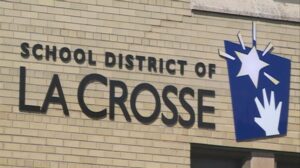Ron Malzer: The La Crosse public school district, envisioning a brighter future
La Crosse Tribune, Sunday January 9, 2022: Editorial Link at https://lacrossetribune.com/opinion/columnists/ron-malzer-the-la-crosse-public-school-district-envisioning-a-brighter-future/article_6872e088-ae08-5d0f-a02c-42c0d6e0f07d.html
How does a community bounce back from a calamity? Many losses must be grieved, ongoing challenges must be met, and the needs of the future must be envisioned.
The coronavirus pandemic now engulfs America. COVID-19 has persisted for two years; it’s a tough time to be forward-looking. Yet it can be done.
On December 30, I spoke with Dr. Aaron Engel, superintendent of the La Crosse Public School District, and Dr. Juan Jimenez, who is both associate dean at Western Technical College, and president of the La Crosse School Board. I asked them to tell us how the pandemic has impacted public education, and how they see the future of public education in La Crosse.
Dr. Jimenez began by saying “Education had to adapt much quicker than it ever anticipated,” with major shifts in K-12 education delivery needed, in some cases literally overnight. With in-person contact not possible at first, school systems had to figure out how to support families having special needs, he reported. Currently, teachers of entering high school freshmen now need to teach ninth-grade content, and, at the same time, find ways to enhance education to make up for lost time.
Dr. Engel estimated that students on average lost 10% of academic skills compared to what is seen historically, with some signs of catching up in place. During the period of virtual instruction, he said, “we saw a social/emotional loss in terms of how to interact with others.” Teachers were pressed, he added, to be informal counselors seeking to address mental health needs.
Educational and career pathways are diverse, Dr. Engel added. He spoke enthusiastically about the school district’s addition of Britta Rotering, Supervisor of Career and Technical Education. She serves as the district’s point person for assuring that our high schools are providing students a springboard for multiple future careers, including work demanding highly technical skills, and apprenticeship-based career development.
The district is in active dialogue with the La Crosse community about the possibility of having a single state-of-the-art building to serve all La Crosse public high school students. One option would have our three current middle schools transitioning into the two current high school buildings.
Dr. Engel walked me through the economics of longer-term school financing. With a facility footprint that is 20 or 30 years old, he indicated, building maintenance costs are resource-draining. “Consolidating … would allow us to save maybe $3 to $5 million a year, which would allow us to invest in kids, instead of investing in old infrastructure.”
Dr. Jimenez, who holds a doctoral degree in developmental education administration, authored a dissertation on developing effective learning center spaces in postsecondary education. He told me that there are examples to draw on where far-sighted construction planning put in high capacity that anticipated longer-term needs, and was ready for future leaps forward in technology and education.
Chicago re-built after its great fire of 1871, which took the lives of nearly 300, burned 17,000 buildings, and left about 100,000 people homeless. Sadly, their first reaction was to blame without evidence an Irish immigrant woman, Mrs. O’Leary. But the city then picked itself back up, and revitalized. Visionary architects and city planners did their part. “The Great Fire transformed lives in Chicago and gave the city [a reputation as] a place of renewal, progress, and great possibilities,” declares D. Bradford Hunt, chair of the history department at Chicago’s Loyola University.
We, too, can build a brighter future for the La Crosse community.
Six months after COVID-19 first struck America, Columbia University educator and researcher Dr. Radhika Iyengar published an essay online. Titled “Education as a path to a sustainable recovery from COVID-19”, her essay brings home this point: “COVID-19 has disrupted education for millions of children across the globe. The education community is re-imagining and re-designing to build back better.”
Thinking and acting locally, we need to be in active dialogue with our educators, co-creating educational structures and planning models to address challenges of the 21st Century. As we digest the impact of the last two years, and manage day-to-day survival, we also need to take responsibility for building a positive future, for the sake of our kids, and our grandchildren.


